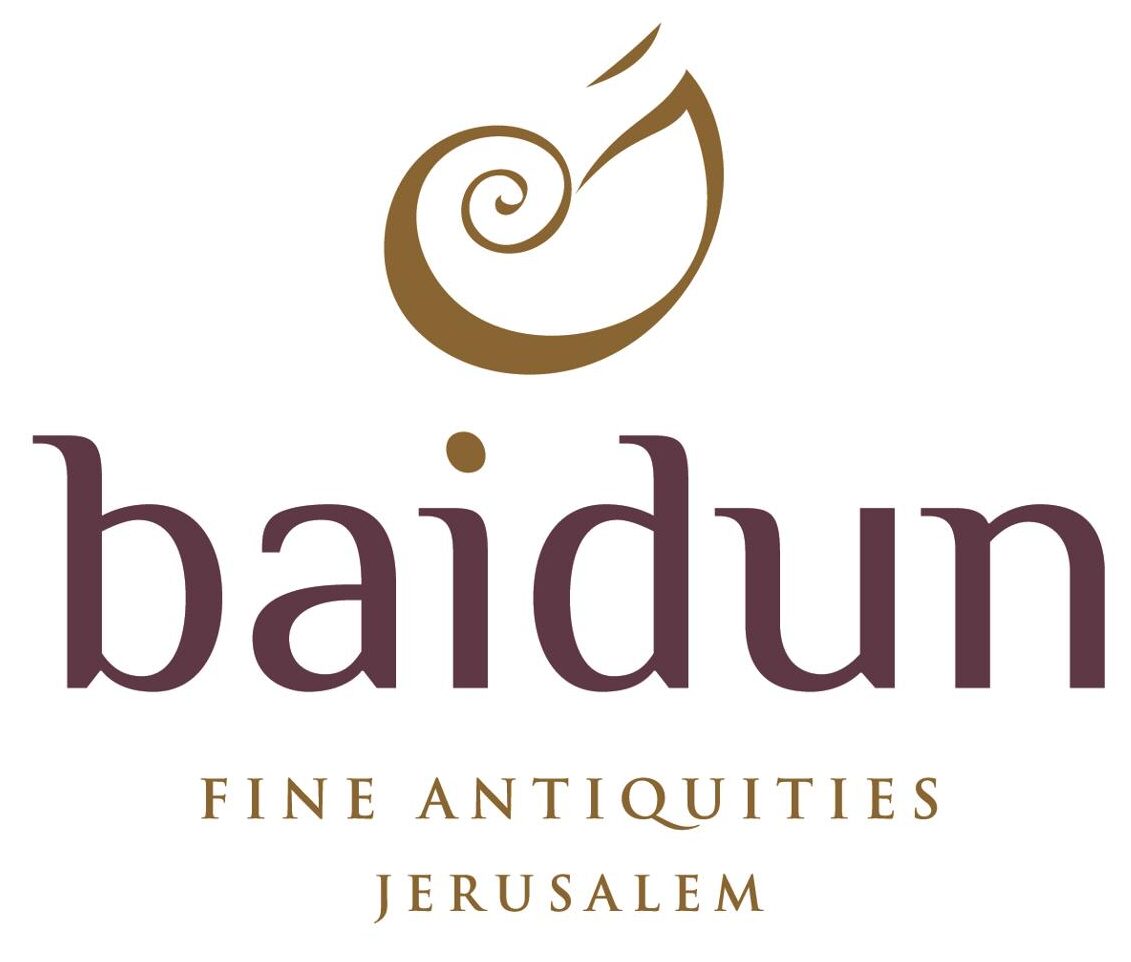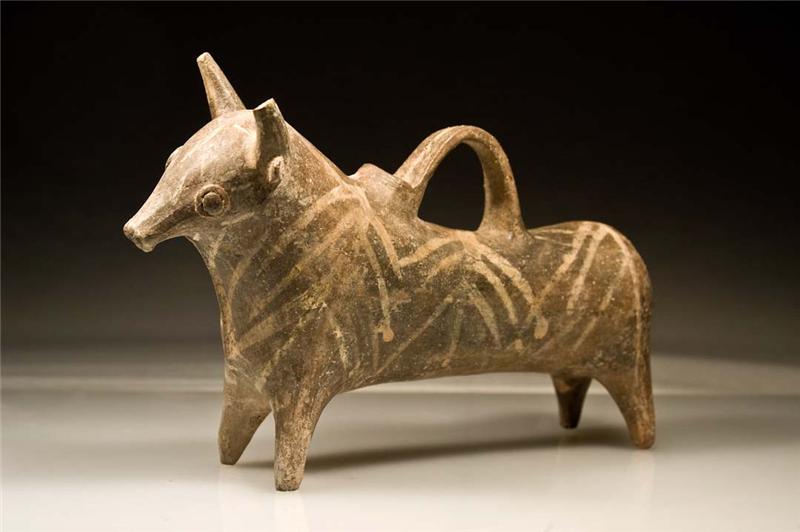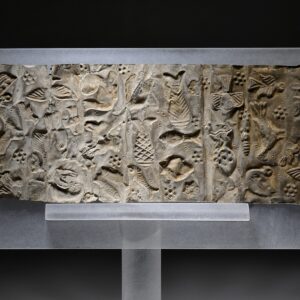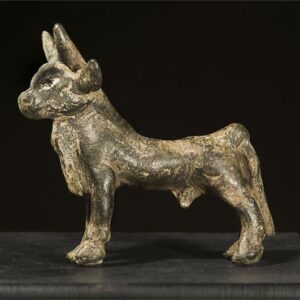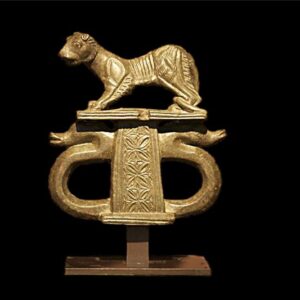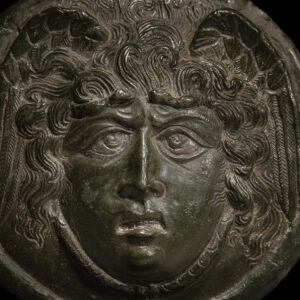This striking piece is an indigenous sculpture from a remarkably cosmopolitan period of eastern Mediterranean history. The Late Bronze Age was a dynamic one for the Cypriots in light of the Hyksos occupation of the Eastern Mediterranean, followed by the Egyptian capture of the island in 1500 B.C.E. and the eventual arrival of the Hittites in around 1200 B.C.E. Following this, Cyprus continued to act as a node on a widespread trading network under the Phoenicians, extending from West Africa to Cornwall in the UK.
The current piece, by comparison, displays a less international and more domestic artistic impression. It is a polychrome rhyton (drinking vessel, or aquamanile) in the form of an elongated bull, with short legs, a long body and a stocky chest rising to a small head with geometrically deconstructed features and laterally projecting horns. The back bears a single fine loop handle connecting the shoulders to a point about halfway along the back. There is a small filling aperture at the front end of the handle by the shoulders. The ground is reddish burnished slipware, with superficial painting of geometric feather-form designs in white paint that fork downwards along the body in three main bands. While rhytons are not uncommon in a wide arc between Greece/Scythia and across to Central Asia, these are usually in other materials and represent animals such as horses and deer.
The current example is pure tauromaquia: the seeming obsession with bulls evinced by Mediterranean cultures from the Cretan bull-leapers to Spanish/French/Portuguese bull-fighting to the Neolithic bull temples of Catal Huyuk in Asia Minor, a phenomenon, relied upon heavily by Picasso and other artists in the early-mid 20th century. There are various theories concerning the significance of these pieces, although the standard view – that these and other cultural materials came from Crete – has lost credibility in recent years. The role of the piece is uncertain, but is likely to have been ritual rather than purely practical. Petrological analysis could be used to differentiate between exotic vs. domestic production, and it certainly does seem that it is indigenous given that the majority of export wares were far more international in the sense of being polished or refined for the taste of a pan-Mediterranean, cosmopolitan population. This, by comparison, has a far greater sense of dynamic modelling and a charming and disarming indigeneity that trancends the often reiterative sameness of trade wares. This is a remarkable, rare and imposing piece of ancient art.



